Unit 1 vocab revised
1/60
There's no tags or description
Looks like no tags are added yet.
Name | Mastery | Learn | Test | Matching | Spaced |
|---|
No study sessions yet.
61 Terms
Graduated/Proportional Symbol Map
Uses symbols that varies in size frequency based on what is being mapped
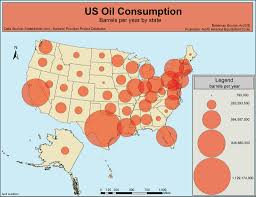
Pattison's Four Traditions (1964): W.D. Pattison
Earth-science: physical geography (not one of the Five Themes), locational: spatial tradition (location), man-land: human/environmental interaction, area-studies: regional geography
Five Themes of Geography (1986): GENIP
location: position, situation of people and things, human/environmental interaction: reciprocal relationship b/w humans & environment, region: area on Earth's surface marked by a degree of homogeneity (uniformity) of some phenomenon, place: uniqueness of a location (or similarity of two or more locales); phenomena within an area, movement: mobility of people, goods and ideas, phenomena between areas
Anthropogenic
Caused or produced by humans
Absolute location
Position on Earth's surface using the coordinate system of longitude (that runs from North to South Pole) and latitude (that runs parallel to the equator).
Relative location
Position on Earth's surface relative to other features. (Ex: My house is north of I-84).
Absolute distance
Exact measurement of the physical space between two places.
Relative distance
Approximate measurement of the physical space between two places.
Site
The physical character of place; what is found at the location and why it is significant.
Situation
The location of a place relative to other places.
Region
Formal Region
Uniform/ homogeneous region is an area within which everyone shares in common one or more distinctive characteristics. The shared feature could be a cultural value such as a common language, or an environmental climate.
Functional Region
Nodal Area organized around a node or focal point. The characteristic chosen to define a functional region dominates at a central focus or node and diminishes in importance outward. This region is tied to the central point by transportation or communication systems or by economic or functional associations.
Perceptual Region
Vernacular -- a place that people believe exists as a part of their cultural identity. Such regions emerge from peoples informal sense of place rather than from scientific models developed through geographic thought. (Often identified using a mental map- which is an internal representation of a portion of Earth's surface). Many "belts" fit this description cotton belt (what used to be dominated by agriculture, and is often referred to as the New South), Bible Belt, sun belt, rust belt,
Environmental perception
A person's idea or image of a place; may often be inaccurate.
Cultural trait
A single element of normal practice in a culture (e.g., wearing a turban)
Culture complex
A combination of related cultural traits (e.g., prevailing modes of dress; nationalism)
Culture hearth
The region from which innovative ideas originate. This relates to the important concept of the spreading of ideas from one area to another (diffusion). Must be viewed in the context of time ...
Ancient culture hearth
Fertile Crescent, Indus Valley, Chang & Yellow River Valley (China), Nile River Valley and Delta, Meso-America (origin of farming developed during the First Agricultural Revolution beginning around 12,000 years ago).
Modern culture hearth
Europe, North America, Japan (origin and focus of the Industrial Revolution beginning in the early 1800s after the onset of the Second Agricultural Revolution).
Cultural landscape (built environment):
Fashioning of a natural landscape by a cultural group. This is the essence of how humans interact with nature.
Sequent occupancy
The notion that successive societies leave their cultural imprints on a place, each contributing to the cumulative cultural landscape. This is an important concept in geography because it symbolizes how humans interact with their surroundings.
Cultural diffusion
The process of spread of a feature or trend from one place to another over time.
Relocation diffusion
The spread of an idea through physical movement of people from one place to another. Ex: spread of AIDS from New York, California, & Florida.
Migrant diffusion
The spread of an idea through people, in which the phenomena weakens or dies out at its previous source ... moves like a "Slinky" (e.g., spread of the Spanish Flu toward the end of World War I).
Expansion diffusion
The spread of a feature from one place to another in a snowballing process...
Hierarchical diffusion
The spread of an idea from persons or nodes of authority or power to other persons or places (Ex: hip-hop/rap music)
Contagious diffusion
The rapid, widespread diffusion of a characteristic throughout the population. (Ex: ideas placed on the internet)
Stimulus diffusion
The spread of an underlying principle, even though a characteristic itself apparently fails to diffuse. (Ex: PC & Apple competition)
Acculturation
The adoption of cultural traits, such as language, by one group under the influence of another
Transculturation
A near equal exchange of culture traits or customs
Assimilation
Process of less dominant cultures losing their culture to a more dominant culture
Environmental determinism
A 19th- and early 20th-century approach to the study of geography that argued that the general laws sought by human geographers could be found in the physical sciences. Geography was therefore the study of how the physical environment caused human activities (e.g., Jared Diamond - Guns, Germs, and Steel)
Possibilism
The physical environment may limit some human actions, but people have the ability to adjust to their environment.
Cultural Ecology
The geographic study of the multiple interactions of human-environmental relationships
Holocene epoch
Current inter-glaciation period (sustained warming phase between glaciations during an ice age), extending from around 12,000 years ago to the present (some scientists speculate that since humans influence the Earth as no species was able to before, we have recently entered the Anthropocene epoch).
First Agricultural Revolution
Beginning around 12,000 years ago; achieved plant domestication (human influence on genetic modification of a plant) and animal domestication (genetic modification of an animal to make it more amenable to human control and use); began permanent settlements along fertile river valleys which moved humans from egalitarian societies (equal) to more stratified societies (unequal).
Geographic Information Systems (GIS):
Collection of computer hardware and software permitting spatial data to be collected, recorded, stored, retrieved, used, and displayed.
Global Positioning System (GPS):
Satellite-based system for determining the absolute location of places.
Remote sensing
Method of collecting data or information through the use of instruments (e.g. satellites) that are physically distant from the area or object of study.
Qualitative data
Described in terms of its quality (that is, informal or relative characteristics such as culture, language, religion, etc.).
Quantitative data
Precisely describes data using numbers and measures (population, political, economic, etc.).
Map projections
Any 3-dimensional object (Earth) will project some distortion onto any 2-dimensional object (map)
Azimuthal Projection Map
Directions from a central point are preserved; usually these projections also have radial symmetry
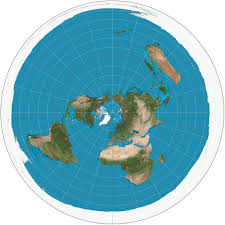
Mercator Projection
Straight meridians and parallels that intersect at right angles, used for marine navigation
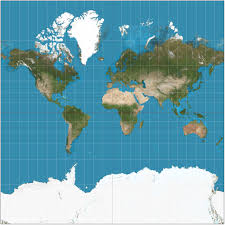
Peters Projection
Equal-area cylindrical, areas of equal size on the globe are also equally sized on the map
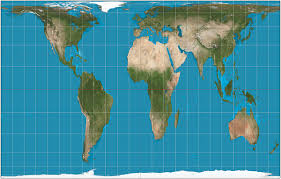
Robinson Projection
Distorts shape, area, scale, and distance in an attempt to balance the errors of projection properties
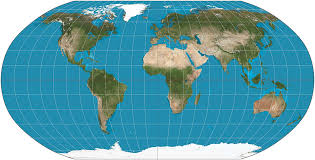
Fuller Projection
Using the surface of a polyhedron, it is unfolded to a net in many different ways and flattened to form a two-dimensional map which retains most of the globe's relative proportional integrity

Dot Map
One dot represents a certain number of phenomena (e.g. population)
Thematic Map
Made to reflect a particular theme about a geographic area (e.g., geographic, topographic, political, etc)
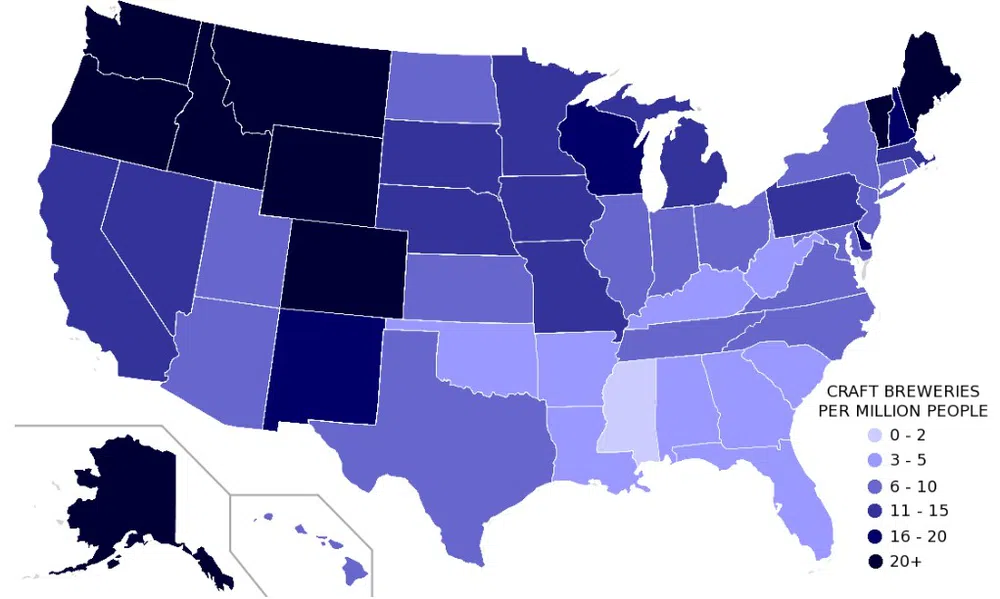
Choropleth Map
Thematic map in which areas are shaded or patterned in proportion to the measurement of the statistical variable being displayed (e.g., population density)
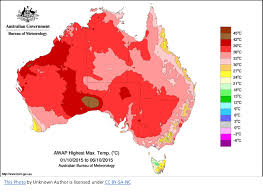
Isoline map
Lines drawn to link different places that share a common value. The prefix 'iso' is a Greek word meaning equal, so an isoline must be a line joining equal points. For example, a line drawn on a map to join up all the places that are the same height above sea level is called a contour.
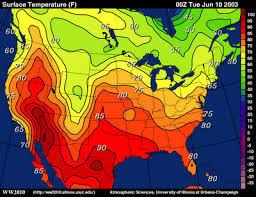
Cartogram Map
A map on which statistical information is shown in diagrammatic form. Sizes and shapes of information are altered to show relative importance or size.
Reference Map
A generalized map type designed to show general spatial properties of features (e.g. world maps, road maps, atlas maps)
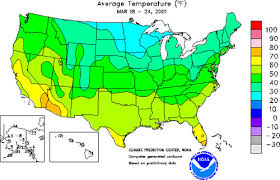
Preference map
Map demonstrating progressively more desirable options
Cartogram
Map in which some thematic mapping variable is substituted for land area (e.g, GDP)
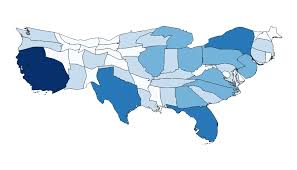
Parallel
Line of latitude (Equator, Tropic of Cancer & Capricorn, Arctic & Antarctic Circles)
Meridians
Line of longitude (Prime Meridian, International Date Line)
TODALSIG
(Title, Orientation, Date, Author, Legend, Scale, Index, Grid) acronym for assessing the validity and reliability of any map
Scale
Representation of a real-world phenomenon at a certain level of reduction or generalization; represented as a fraction (large scale = large detail, small area; small scale = small detain, large area)
Scale: global, regional and local
Geographic patterns, activities and effects can be observed and can occur at world-wide, regional and local levels. It is important to differentiate, understand and explain the level at which different patterns, activities and effects are seen.